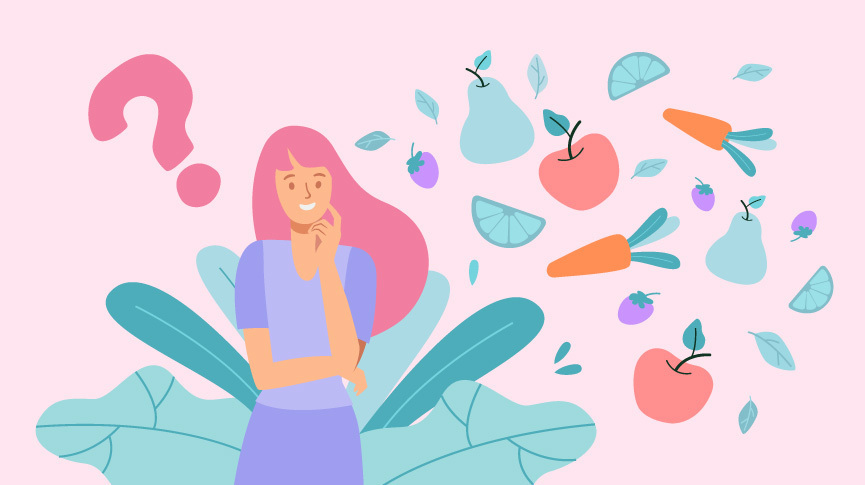What are Antioxidants and Why Do We Need Them?

This article was medically fact-checked by Consultant Obstetrician and Gynaecologist Dr. Shree Datta.
You’ve probably heard the term “antioxidants” thrown around here and there, in regards to nutrition. But what exactly are antioxidants, how do they work in the body, why do we need them, and how do we get them?
Free Radicals
Before understanding antioxidants, you have to know what free radicals are, and what effect they have on the body.
The body gets older, breaks down, and becomes more and more susceptible to environmental changes and toxins. Call it the cycle of life.
One of these changes is often due to free radicals. You probably don’t remember this from high school chemistry, but free radicals are essentially unstable molecular ions.
Oftentimes in the body, oxygen molecules will split up and become unstable free radicals, allowing them to interact with other molecules in the body. This can in turn subject the body to oxidative stress, breaking cells down over time.
Not all free radicals are bad. The body produces them naturally as a reaction to exercise or inflammation, and they help to maintain balance.
Unfortunately, many people are exposed to excess free radicals from environmental toxins like pollution, pesticides, household chemicals, radiation, cigarette smoke, and alcohol.
While cell degeneration is a normal part of aging, free radicals can cause even more damage to cells. Scientists have connected free radicals to diabetes, Alzheimers, cancer, Parkinson’s disease, autoimmune disorders, and more.
What About Antioxidants?
While there’s no “cure” for free radicals, because they are a natural part of aging. There are ways to help negate or slow down the effect they have on the body.
Which is where antioxidants come in!
Antioxidants are exactly what they sound like, they help slow down the effects of free radicals and the aging process by preventing the oxidation of molecules. Antioxidants generously give electrons to free radicals, which helps to stabilize said free radicals. This doesn’t however, cause the antioxidants to become unstable.
They essentially help to cancel out the effects of free radicals, while repairing DNA and helping maintain cellular health.
Of course, like many things in the scientific world, the effectiveness of antioxidants has not been widely backed up by data. While some studies do support their effectiveness, others fall short.
That being said, it’s helpful to avoid obvious causes of free radicals whenever possible. You can do this by opting for organic or minimally processed foods, avoiding chemicals in your cleaning supplies, and choosing chemical-free sustainable period products like a menstrual cup.
While the jury may still be out on exactly how and if antioxidants are effective, it doesn’t hurt to help incorporate them into your diet. Antioxidants for the most part come from nutrient rich, healthy foods, that are important to a healthy lifestyle overall.
Antioxidants come from other nutrients that you are well familiar with like Vitamin C, Vitamin E, and beta carotene, and minerals like manganese and selenium. Many foods are likely high in antioxidants because they serve a similar function as they do in the human body – to help prevent oxidation and protect against environmental toxins.
One cool that has been developed is the FRAP test, or Ferric Reducing Ability of Plasma. This essentially measures the antioxidant power a particular food has, and how well they help to neutralize certain free radicals.
This FRAP test has helped scientists and healthcare professionals make dietary recommendations to help best their clients against the effects of free radicals.
What Foods Are High In Antioxidants?
There’s been a lot of science thrown at you in this article, so let’s get down to basics.
How do you eat more antioxidants? Here are some delicious foods to reach for:
- Blueberries: They also happen to be high in Vitamin C, potassium, and other plant based nutrients, or phytoflavinoids.
- Beets: You can juice them, you can roast them, you can put them raw on a salad. This beautiful root vegetable is high in iron, folate, and fiber. They get their beautiful color from an antioxidant group called betalains.
- Spinach: Spinach is low in calories, but high in minerals like iron, potassium, magnesium, and calcium. It’s also of course, high in antioxidants. Other dark leafy greens are also a great source of antioxidants.
- Raspberries: In addition to antioxidants, these delicious bit sized berries come packed with Vitamins K, C, and E, as well as a wide array of minerals including phosphorus and copper.
- Kidney Beans: Are you seeing a pattern with colorful foods? Like most legumes, these beans are high in protein, along with antioxidants.
- Pecans: It doesn’t stop at antioxidants, pecans are also full of heart healthy fats, balancing minerals, and are low in carbs.
Whether or not antioxidants work in the way people suggest they do, there’s no harm in adding more of these healthy foods to your everyday diet! Try to incorporate a wide variety of antioxidant rich foods, as they operate differently according to what other nutrients are in said foods.
So grab those blueberries, and eat up. Yum!
Facts Checked By:

Dr. Shree Datta is a Consultant Obstetrician and Gynaecologist in London, specialising in women’s health including all menstrual problems such as fibroids and endometriosis. Dr. Shree is a keen advocate for patient choice, having written numerous articles and books to promote patient and clinician information. Her vision resonates with INTIMINA, with the common goals of demystifying periods and delivering the best possible care to her patients.
Article written by:

Natasha (she/her) is a full-spectrum doula and health+wellness copywriter. Her work focuses on deconstructing the shame, stigma, and barriers people carry around birth, sex, health, and beyond, to help people navigate through their lives with more education and empowerment. You can connect with Natasha on IG @natasha.s.weiss.


